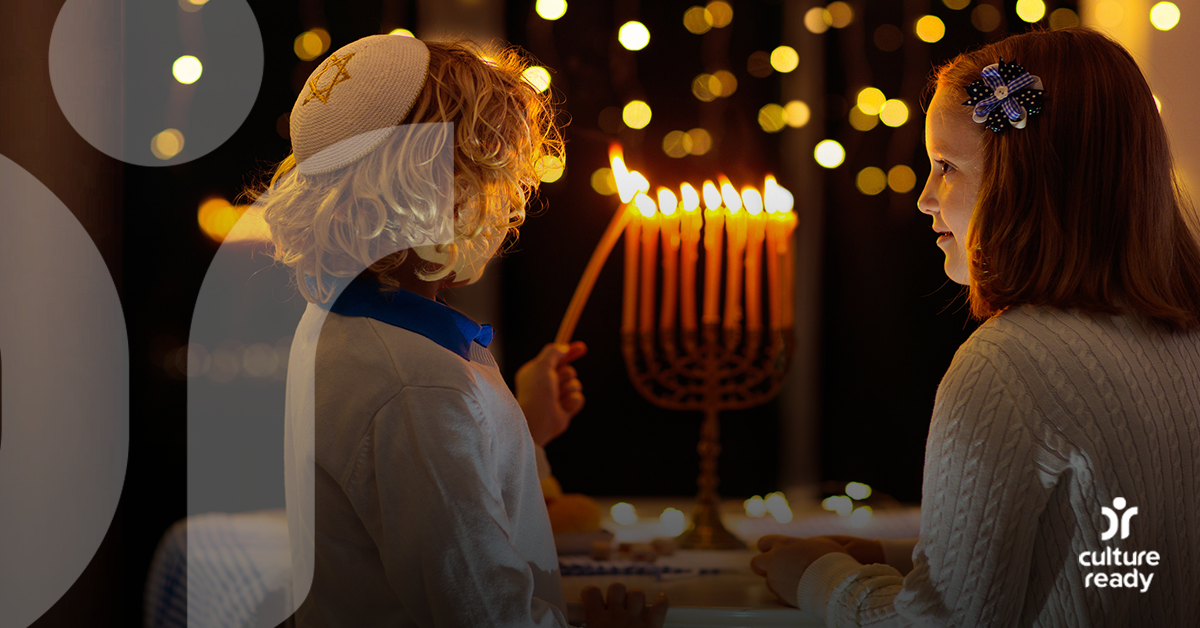The Hanukkah Story and Traditions Around the World
For the past week, Jews all over the world have been celebrating Hanukkah, also known as the Festival of Lights.
The eight-day holiday commemorates the triumph of “Judah the Maccabee” and his Hasmonean clan against the Seleucid Kingdom and its king, Antiochus IV.
Origin and History
The Seleucid king had prohibited Jews from practicing their faith and ordered them to worship idols. In 168 B.C.E., Antiochus’ soldiers descended on Jerusalem, killing thousands of people, and desecrating the Second Temple with pigs’ blood.
Judah’s father organized a revolt against the well-trained Syrian army, which had the advantage of size and sophisticated weapons. For three years, the Maccabees fought against the Seleucid soldiers. After a fierce battle, they finally took back Jerusalem and drove the Seleucids out.
When the victorious Jewish fighters got to the Second Temple and found it desecrated, they noticed the flames of the seven-branch candelabra—the menorah—were extinguished. After cleaning and purifying the Temple, the Maccabees went to light the menorah but only found enough oil to burn for just one day. Somehow, the oil burned for eight nights. The word Hanukkah meand "dedication" in Hebrew and refers to the redediction of the Second Temple.
Unique Customs
Most families celebrate the holiday by lighting a menorah candle for each night of Hanukkah, eating foods fried in oil, such as latkes (potato pancakes) and doughnuts, and spinning a top called a dreidel. But Jews in other parts of the world have their own unique traditions.
Mexican children play a dreidel game called “toma todo,” meaning winner takes all. The dreidel they use has six sides instead of four. Jews in Mexico also break a treat-filled piñata that’s shaped like a dreidel.
In India, rather than light the menorah candles, the custom is to dip candle wicks in coconut oil. Indian Jews also eat a sweet treat called burfi instead of latkes.
Families in Israel celebrate by visiting the sites in Jerusalem and Modi’in where the events the holiday commemorates took place. Those of Middle Eastern descent prepare foods like kuku savri, an Iranian egg fritter.
Italian Jews have a tradition that connects Tisha B’Av, a day of mourning for the destruction of the Holy Temple in Jerusalem, to the rededication of the Second Temple that Hanukkah marks. They use the same candle that helped them read “The Book of Lamentations” during Tisha B’Av to light the other candles in the menorah.
In Israel, people light just one candle a night for eight nights on the menorah and indulge in fried jelly doughnuts known as sufganiyot. The doughnuts symbolize the oil in the Temple that lasted for eight nights.
Jews in Morocco also enjoy food fried in oil. Their doughnuts are called sfenj and are eaten on the third night of the holiday. Other traditional foods include couscous with caramelized onions topped with cinnamon and powdered sugar.
There are no Jews still living in Kurdistan. However, Kurdish Jews still observe several customs. One custom involves children locking the doors of their rooms, and their parents giving them coins in order to enter. Another tradition involves using eggshells as cups for wicks and oil, instead of a menorah.
